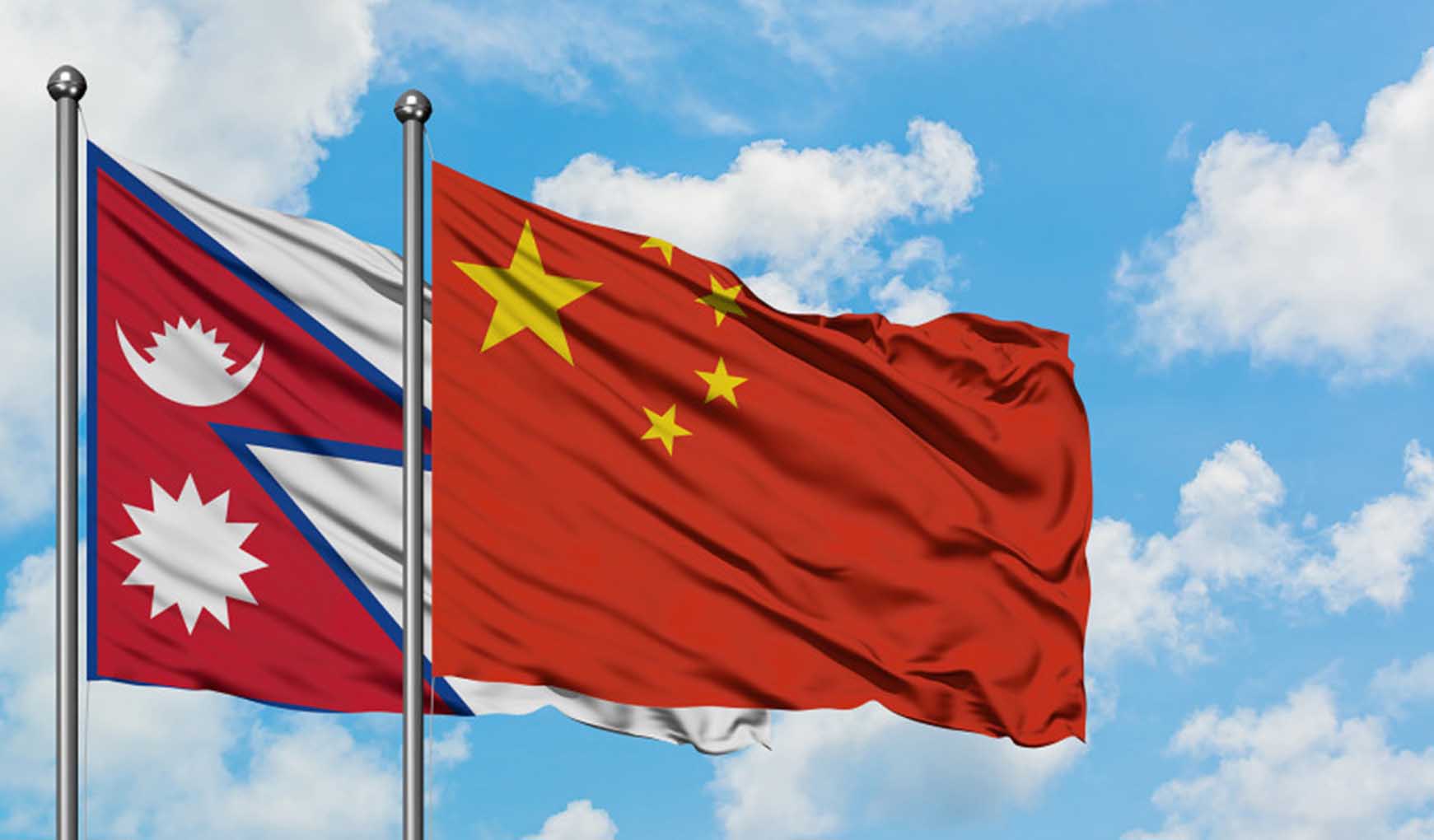India’s new quest for regional identity
The problem is consistency, and from time to time, Indian focus keeps shifting from the SAARC region

By Dhananjay Tripathi
Ask a student of geopolitics or regionalism about India’s regional identity. The instant answer would be South Asia. Even in strategic studies, India is characterised as a South Asian power. Contrary to these theoretical understandings of India’s regional identity, there has been a consistent attempt by some Indian academics and policymakers to question India’s association and engagement with South Asia in the last few years. There are reasons put forth by those who like to question South Asia.
First, the lack of integration by giving examples from other regions like Europe and Southeast Asia. The intra-regional trade figures reverberate in conferences and round tables to establish South Asia’s lack of regional vigour. The intra-regional trade for the European Union (EU) is around 63%, and for the Southeast Asian countries, it is close to 25%. In comparison, intra-regional trade in South Asia is abysmally low, at around 5%.
These figures can change once we invest ourselves and honestly work towards regional integration. Unfortunately, that is not the case at present. Also, the India-Pakistan hostility is counted as a prominent spoiler for South Asian regionalism. Critics cite these two arguments to pronounce a judgement on South Asian regionalism. Although, on a closer examination, we can situate an entirely different reason for the growing pessimism towards South Asia.
Irony of South Asian Regionalism
The common argument of South Asian sceptics is that India-Pakistan rivalry exhausts every effort of regionalisation. This assertion is partly true. Both India and Pakistan were not keen on supporting Bangladesh’s initiative to form a regional organisation in the 1980s. Nepal and Sri Lanka extended support to Bangladesh, and afterwards, all South Asian countries joined hands to establish the South Asian Association for Regional Cooperation (SAARC) in 1985.
India may have achieved a diplomatic victory by boycotting the 2016 SAARC summit, but such moves will hardly create any substantial political-economic pressure on Pakistan
SAARC had seven members — Bangladesh, Bhutan, India, Pakistan, Maldives, Nepal, and Sri Lanka. Afghanistan joined in 2007. The SAARC has five regional centres and four specialised bodies, including the South Asian University (SAU). In all of these, the SAU is the most visible and dynamic body of SAARC because it is a place where young South Asians, through formal education, become regional aware. SAARC members give priority to SAU, and, therefore, this institution is academically flourishing.
The comparison with European and Southeast Asian regionalism is not appropriate. Every region has its own political and economic specificities. While there can be some similarities, to make an absolute comparison between regions is not rational. Let us not ignore the death and destruction witnessed in Europe during World War- II. It was the desperate desire for long term regional peace that brought European leaders together. WW II also quelled the economic supremacy of Europe, and there was a realisation that economic reconstruction of Europe is a daunting task in the absence of regional unity.
For Southeast Asian countries, extra-regional factors too played a role in regionalism. There was an apprehension that political events within and outside the region could have a long-term bearing. These are like the Communist revolution in China (1949) and the Korean War (1950-53). The Vietnam war (1955-75) was critical, making Southeast Asia strategically one of the most vital regions during the Cold War. The only way to deal with these challenges was to join hands, which helped Southeast Asia’s regionalism process.
Contrarily in post-colonial and post-partition South Asia, there are several faultlines that states purposely don’t want to address. The last SAARC summit was held in 2014. India refused to attend the 2016 summit scheduled at Islamabad after the Uri terrorist attacks. Post-Uri Attack, India wanted to isolate Pakistan at the regional level, and Bangladesh, Afghanistan and Bhutan joined it. The SAARC is not a formidable regional organisation. Lack of integration hardly makes any South Asian country dependent on the regional economy; thus, there is no cost for defection.
India may have achieved a diplomatic victory by boycotting the 2016 SAARC summit, but in real terms, such moves hardly create any substantial political-economic pressure on Pakistan. The answer is in strengthening the regional integration where India can play a significant role. Any political posturing in and around SAARC is primarily for domestic political consumption. On a deeper analysis of South Asian politics, we can see a different picture. The reality is that we undertook a project to describe how we are different from our neighbours. The irony is South Asians are culturally close to each other but stand politically divided.
Is this Pakistan or China?
The present scrutiny on the functioning of SAARC raises a serious question on the timing. Are we apprehensive of Pakistan? Looking at the history of South Asian regionalism and the functioning of SAARC, this is a wrong conclusion. While India has its set of complaints against Pakistan, particularly of terrorism, Pakistan doesn’t have the resources and credibility to replace India in the region.
The dilemma, therefore, is linked to the growing clout of China in South Asia. A couple of decades ago, China only had formidable political ties with Pakistan. The other South Asian countries were not comfortable with China. After the 1962 war with India, even Nepal got apprehensive of China, and then the King of Nepal permitted Indian military outposts along its northern frontier. China ignored the liberation of Bangladesh and vetoed its attempt to get the membership of the United Nations from 1972-1974. We know that China, till date, has border disputes with Bhutan. The images of the 2017 Doklam standoff between India and China are fresh in our minds. Notably, Doklam is a disputed border area between Bhutan and China; India supported Bhutan.
Initially, even China was not enthusiastic about South Asia. One of its early positions on South Asia was that the imperialist powers might use this region. China also had a negative orientation towards regionalism. Much of this has changed in the last few decades. China has emerged as a vital economic partner of South Asian states, including India. China is active in South Asia and currently an observer of SAARC and will not hesitate to take the membership if offered.
There is a clear division amongst the SAARC member states on China’s membership. While India is firmly opposed to China, some of the South Asian countries have a different opinion. Not only trade, but China has also emerged as a development partner of South Asian countries and, over the years, funded billions of dollars. No wonder, except for India and Bhutan (both having border disputes with China), all other South Asian countries have endorsed and are participating in the Belt and Road Initiative (BRI).
Today China is an all-weather friend of Pakistan and is boldly dealing with the Taliban in Afghanistan. Nepal now considers itself a bridge between India and China; Sri Lanka has even given China a project like the Colombo port city that questions its sovereignty. Bangladesh is exporting military hardware from China, and recently Bhutan has been engaging with China on the border dispute. China is making concerted efforts to increase its presence in South Asia.
China has a strong presence in South Asia, which explains why a few Indian strategic analysts are losing interest in the region
This year in July, China officially launched the China-South Asian Countries Poverty Alleviation and Cooperative Development Centre. This centre, based at Southwest University in Chongqing, will be a training centre for sharing Chinese experience in alleviating poverty. China had illustrious achievements in taking some 800 million people out of extreme poverty but is sharing Chinese experience the only goal of this centre? We are asking this question because six South Asian countries participated in the launch of this centre. The two exceptions were India and Bhutan.
China during the Covid-19 pandemic extended help to South Asian countries and created the China-South Asia Emergency Supplies Reserve (CSAESR). The CSAESR was launched at Chengdu, China, and the inauguration was attended by ambassadors from Afghanistan, Bangladesh, Pakistan, Nepal, and Sri Lanka. Again the absentees were India and Bhutan. According to the Chinese Foreign Ministry statement, “The official launch of the Reserve will serve as an important platform for the joint anti-Covid-19 and emergency cooperation of China and South Asian countries, and it will further deepen the relations between China and South Asian countries”. These two recent organisations floated by China for South Asian countries explain its future planning for the region and are likely to add to India’s concern.
Is Indo-Pacific A Replacement?
China has a strong presence in South Asia, which explains why a few Indian strategic analysts are losing interest in the region. Several terms are also coined in the recent past, like Indo-Pacific and sub-regionalism, to justify this drift. While the Indo-Pacific is not our construct, but somewhere it is drawing the attention of those who are particularly interested in checking the rise of China. Indo-Pacific is viewed as the convergence of interest, and Quadrilateral Security Dialogue (QSD) between the USA, Australia, Japan and India (the Quad) is assumed as a strategic alliance to counter assertive China. This view is more prevalent in India, whereas other countries are still reluctant to project QSD as an anti-China bloc. Not only these four countries, even the EU recently made its Indo-Pacific strategy public. The EU’s Indo-Pacific strategy keywords are democracy, human rights, the rule of law and free trade. Interestingly, the EU also mentions both India and China in its strategy to strengthen economic ties. The approach is straightforward: give some message to China in terms of democracy and the rule of law, but not declare it a strategic enemy.
China-South Asian Countries Poverty Alleviation and Cooperative Development Centre and China-South Asia Emergency Supplies Reserve, floated by China, explain its future planning for the region and are likely to add to India’s concern
Small South Asian countries (except for Pakistan) are rightly playing with both India and China in these new geopolitical changes. Still, it is a wrong calculation that in India’s neighbourhood there is a strong preference for China over India. As the largest democracy, India is an obvious choice of the West that now perceives China as a long term challenge, but is this what we want? Shall we be a partner (junior partner) in an agenda set by the West? The answer is no. India has global aspirations. While China is making things complicated for India, it cannot forever stop its rise.
India: A South Asian Power
India cannot afford to squeeze its role in South Asia. There is a need to accept the new reality of China’s presence in the region, and it will grow in future. At the same time, it is also true that India is regarded as a significant South Asian player by neighbouring countries and the international community. There is goodwill for India in this region, but we created some domestic political controversies, in the last few years, that have regional dimensions. Nepal’s intellectuals didn’t shy in alleging that India tacitly endorsed the 2015 Nepal-India border blockade by the Madheshi community. Likewise, it is paradoxical that today, Bangladesh is one of the closest Indian allies in the region, but we keep raking up Bangladeshi immigrant issues in domestic political discourse. India-Bangladesh in the past resolved some controversial border affairs, and the immigrant problem could be amicably dealt with, provided we genuinely want a solution.
Not much is lost; we must reorient our South Asia policy and actively engage in the region. Let us not forget that in 2014 Prime Minister Narendra Modi invited heads of South Asian countries for his oath-taking ceremony. By standing side by side with the South Asian leaders, Modi created a powerful impression, and it was well appreciated. There are also a few praiseworthy steps by India, like South Asia Satellite, coming forward for creating a regional fund during the pandemic, etc. The problem is consistency, and from time to time, Indian focus keeps shifting from the region. We need to rectify this in our South Asian policy. Let us not forget India is a South Asian power.
(The author is Senior Assistant Professor, Department of International Relations, South Asian University, New Delhi)
Now you can get handpicked stories from Telangana Today on Telegram everyday. Click the link to subscribe.
Click to follow Telangana Today Facebook page and Twitter .
Related News
-
Haiti gang attack on journalists covering hospital reopening leaves 2 dead, several wounded
5 mins ago -
21 dead as Mozambique erupts in violence after election court ruling
23 mins ago -
Cartoon Today on December 25, 2024
8 hours ago -
Sandhya Theatre stampede case: Allu Arjun questioned for 3 hours by Chikkadpallly police
9 hours ago -
Telangana: TRSMA pitches for 15% school fee hike and Right to Fee Collection Act
9 hours ago -
Former Home Secretary Ajay Kumar Bhalla appointed Manipur Governor, Kerala Governor shifted to Bihar
9 hours ago -
Hyderabad: Organs of 74-year-old man donated as part of Jeevandan
9 hours ago -
Editorial: Modi’s Kuwait outreach
9 hours ago




